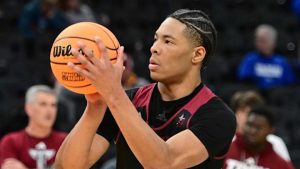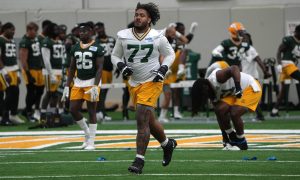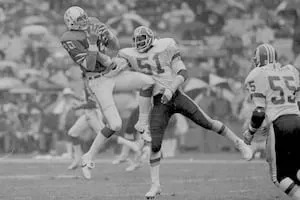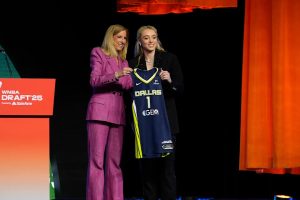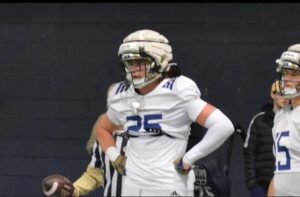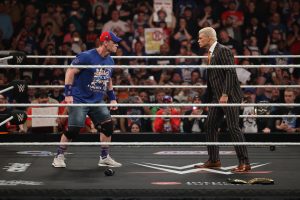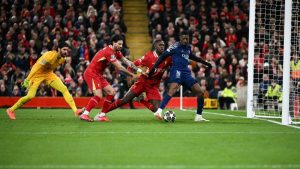The principal parties to the proposed settlement of three athlete-compensation antitrust cases against the NCAA and Power Five conferences late Monday night Pacific Time (early Tuesday morning Eastern Time) filed a revised version of their agreement that did not include any changes to roster limits that would take effect July 1 — one of the most discussed issues of a final-approval hearing U.S. District Judge Claudia Wilken held last week in Oakland, California.
The new filing also attempts to further clarify the rights of future athletes under the 10-year period that the settlement seeks to cover. This was another issue on which Wilken spent considerable time during last week’s hearing. She also covered it during the preliminary-approval hearing in September.
In addition, the new filing attempts to address issues that some athletes said they had in submitting information via an online portal set up by the third-party administrator that is helping the plaintiffs’ attorneys handle claims for payments from what is set to be a $2.8 billion damages pool. Under the presumptive revisions, athletes would be given additional time to file claims — until May 16.
In a smaller matter, the filing attempts to clarify the College Football Playoff’s role in — and future coverage from —the settlement. That clarification was sought by one set of objectors.
Based on instructions that Wilken provided at the end of last week’s hearing, objectors now have until 11:59 p.m., Pacific Time, on Tuesday to file a response.
Emphasizing the small number of objectors and athletes who have opted out, among a group of roughly 390,000 current and former atheletes, the new filing argues: “These revisions further confirm what over 99.9% of the class members have apparently realized — the Settlement Agreement is fair and reasonable, and should be approved so that its benefits can fully flow to the classes.”
The presumptive agreement’s pillars are the $2.8 billion in damages by the NCAA and the conferences that would go to current and former athletes — and their lawyers — over 10 years, and Division I schools would be able to start paying athletes directly for use of their name, image and likeness (NIL) starting July 1, subject to a per-school cap that would increase over time and be based on a percentage of certain athletics revenues.
The roster limits — which would be implemented in combination with the end of the NCAA’s current system of team-by-team scholarship limits — are a major target of several objectors to the settlement. Thousands of current walk-on athletes stand to lose their places on Division I teams if the settlement is approved. Some objectors have told Wilken in writing, as well as in-person at last week’s hearing, that they and other athletes already have been told by coaches that they will be losing their spots. Or, in the case of high school recruits, they have been told that spots they were going to receive will no longer exist.
In an order issued prior to last week’s hearing, Wilken specified that she “cannot order changes to the agreement.”
During last week’s hearing, though, Wilken specifically said about roster limits: “My idea is … grandfathering.” (That is, allowing current athletes to keep their roster spots.) “It’s not that many people. It’s not that much money.” She added that it would be a “goodwill” move that would resolve a lot of “sturm und drang.”
However, in the new filing, the principals wrote:
“The Parties appreciate the perspective and heartfelt stories that the student-athletes who objected shared, including those shared at the hearing. Defendants have evaluated — and discussed with numerous member institutions — the Court’s suggestion to ‘grandfather’ in the roster limits. Defendants, however, have informed (the plaintiffs’ lawayers) that those discussions revealed no practicable way to do so, because ‘grandfathering’ roster limits would cause significant disruption. The Parties are both independently aware that member institutions and student-athletes have been making decisions in anticipation of the roster limits being immediately effective if the Settlement is approved.”
Although roster limits received no attention during the preliminary-approval hearing, the principals noted that written objections were made about that aspect of the settlement prior to that hearing, and Wilken granted preliminary approval.
The principals also contend that courts have “recognized the ability of sports organizations to have reasonable rules regulating their sports, which includes roster sizes.”
As for the interests of future athletes over the 10-year settlement period, Wilken raised questions during last week’s hearing about whether the proposed agreement protects those athletes’ due-process rights. The settlement, as it stood going into the hearing, would give athletes in each new class the opportunity to raise objections in court. But Wilken still seemed less than fully convinced about whether that was sufficient and she asked for further explanation.
Plaintiffs’ attorney Jeff Kessler was involved with a prior labor case against the NFL that also ended in an agreement covering a future group of athletes. He said during the hearing that the NFL case and others provided legal precedent for the type of arrangement that has been negotiated in this case, and he said that if a judge found merit in future objections, the judge would have the ability to terminate the settlement.
The principals cited that and other cases in the new filing. They added that the settlement agreement has been adjusted “to clarify that future Division I athletes will not release their injunctive relief claims until they have received notice and an opportunity to object to the continuation of the Settlement.” These athletes will have 60 days from the time they have received this notice to object.
They added: “… to the Parties’ knowledge, (the revisions create) the most robust and protective process ever devised to safeguard the rights of future Injunctive Relief Settlement Class members.”
This article originally appeared on USA TODAY: House vs. NCAA settlement gets possible revisions, but not on roster limits
The principal parties to the proposed settlement of three athlete-compensation antitrust cases against the NCAA and Power Five conferences late Monday night Pacific Time (early Tuesday morning Eastern Time) filed a revised version of their agreement that did not include any changes to roster limits that would take effect July 1 — one of the most discussed issues of a final-approval hearing U.S. District Judge Claudia Wilken held last week in Oakland, California.
The new filing also attempts to further clarify the rights of future athletes under the 10-year period that the settlement seeks to cover. This was another issue on which Wilken spent considerable time during last week’s hearing. She also covered it during the preliminary-approval hearing in September.
In addition, the new filing attempts to address issues that some athletes said they had in submitting information via an online portal set up by the third-party administrator that is helping the plaintiffs’ attorneys handle claims for payments from what is set to be a $2.8 billion damages pool. Under the presumptive revisions, athletes would be given additional time to file claims — until May 16.
In a smaller matter, the filing attempts to clarify the College Football Playoff’s role in — and future coverage from —the settlement. That clarification was sought by one set of objectors.
Based on instructions that Wilken provided at the end of last week’s hearing, objectors now have until 11:59 p.m., Pacific Time, on Tuesday to file a response.
Emphasizing the small number of objectors and athletes who have opted out, among a group of roughly 390,000 current and former atheletes, the new filing argues: “These revisions further confirm what over 99.9% of the class members have apparently realized — the Settlement Agreement is fair and reasonable, and should be approved so that its benefits can fully flow to the classes.”
The presumptive agreement’s pillars are the $2.8 billion in damages by the NCAA and the conferences that would go to current and former athletes — and their lawyers — over 10 years, and Division I schools would be able to start paying athletes directly for use of their name, image and likeness (NIL) starting July 1, subject to a per-school cap that would increase over time and be based on a percentage of certain athletics revenues.
The roster limits — which would be implemented in combination with the end of the NCAA’s current system of team-by-team scholarship limits — are a major target of several objectors to the settlement. Thousands of current walk-on athletes stand to lose their places on Division I teams if the settlement is approved. Some objectors have told Wilken in writing, as well as in-person at last week’s hearing, that they and other athletes already have been told by coaches that they will be losing their spots. Or, in the case of high school recruits, they have been told that spots they were going to receive will no longer exist.
In an order issued prior to last week’s hearing, Wilken specified that she “cannot order changes to the agreement.”
During last week’s hearing, though, Wilken specifically said about roster limits: “My idea is … grandfathering.” (That is, allowing current athletes to keep their roster spots.) “It’s not that many people. It’s not that much money.” She added that it would be a “goodwill” move that would resolve a lot of “sturm und drang.”
However, in the new filing, the principals wrote:
“The Parties appreciate the perspective and heartfelt stories that the student-athletes who objected shared, including those shared at the hearing. Defendants have evaluated — and discussed with numerous member institutions — the Court’s suggestion to ‘grandfather’ in the roster limits. Defendants, however, have informed (the plaintiffs’ lawayers) that those discussions revealed no practicable way to do so, because ‘grandfathering’ roster limits would cause significant disruption. The Parties are both independently aware that member institutions and student-athletes have been making decisions in anticipation of the roster limits being immediately effective if the Settlement is approved.”
Although roster limits received no attention during the preliminary-approval hearing, the principals noted that written objections were made about that aspect of the settlement prior to that hearing, and Wilken granted preliminary approval.
The principals also contend that courts have “recognized the ability of sports organizations to have reasonable rules regulating their sports, which includes roster sizes.”
As for the interests of future athletes over the 10-year settlement period, Wilken raised questions during last week’s hearing about whether the proposed agreement protects those athletes’ due-process rights. The settlement, as it stood going into the hearing, would give athletes in each new class the opportunity to raise objections in court. But Wilken still seemed less than fully convinced about whether that was sufficient and she asked for further explanation.
Plaintiffs’ attorney Jeff Kessler was involved with a prior labor case against the NFL that also ended in an agreement covering a future group of athletes. He said during the hearing that the NFL case and others provided legal precedent for the type of arrangement that has been negotiated in this case, and he said that if a judge found merit in future objections, the judge would have the ability to terminate the settlement.
The principals cited that and other cases in the new filing. They added that the settlement agreement has been adjusted “to clarify that future Division I athletes will not release their injunctive relief claims until they have received notice and an opportunity to object to the continuation of the Settlement.” These athletes will have 60 days from the time they have received this notice to object.
They added: “… to the Parties’ knowledge, (the revisions create) the most robust and protective process ever devised to safeguard the rights of future Injunctive Relief Settlement Class members.”
This article originally appeared on USA TODAY: House vs. NCAA settlement gets possible revisions, but not on roster limits

